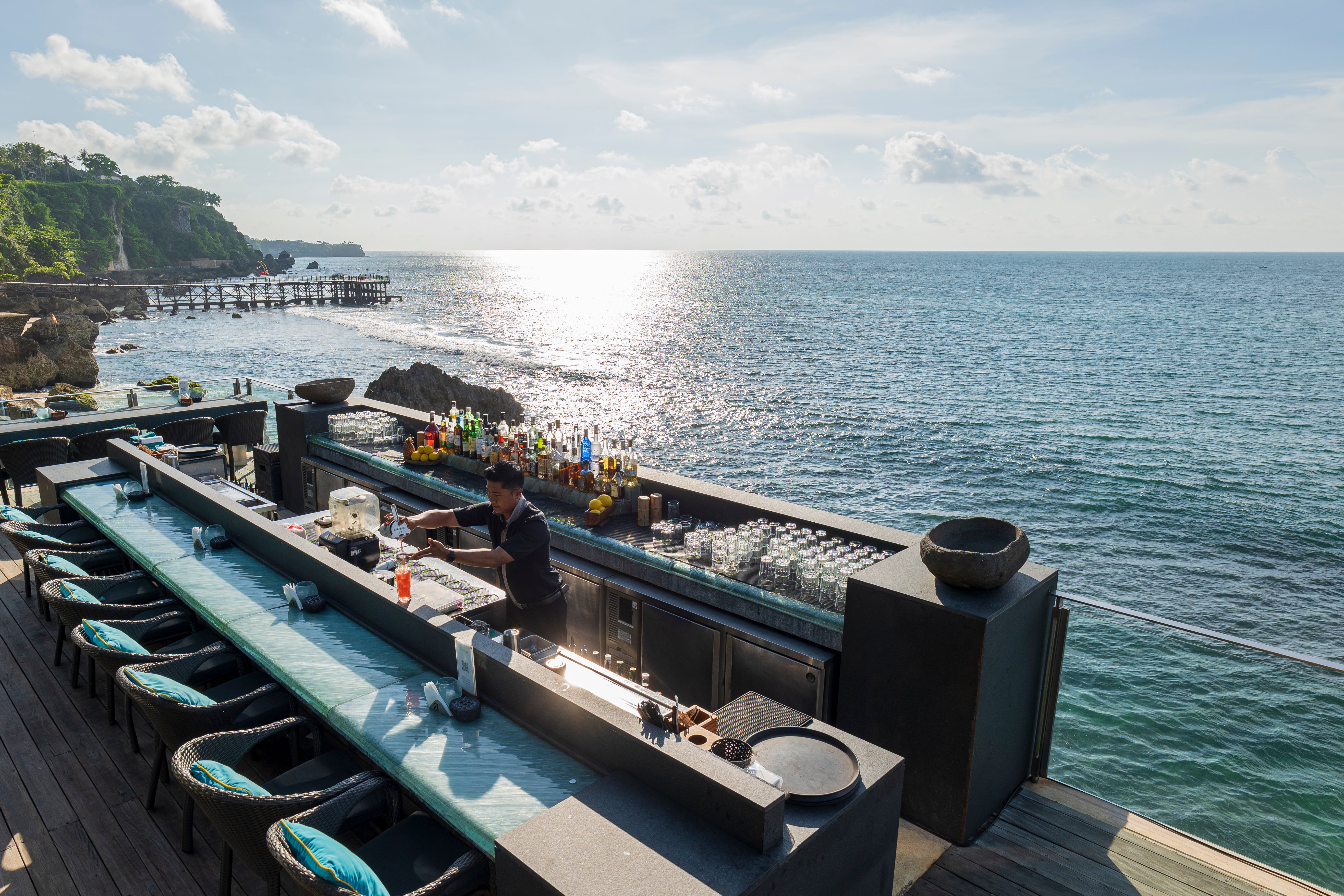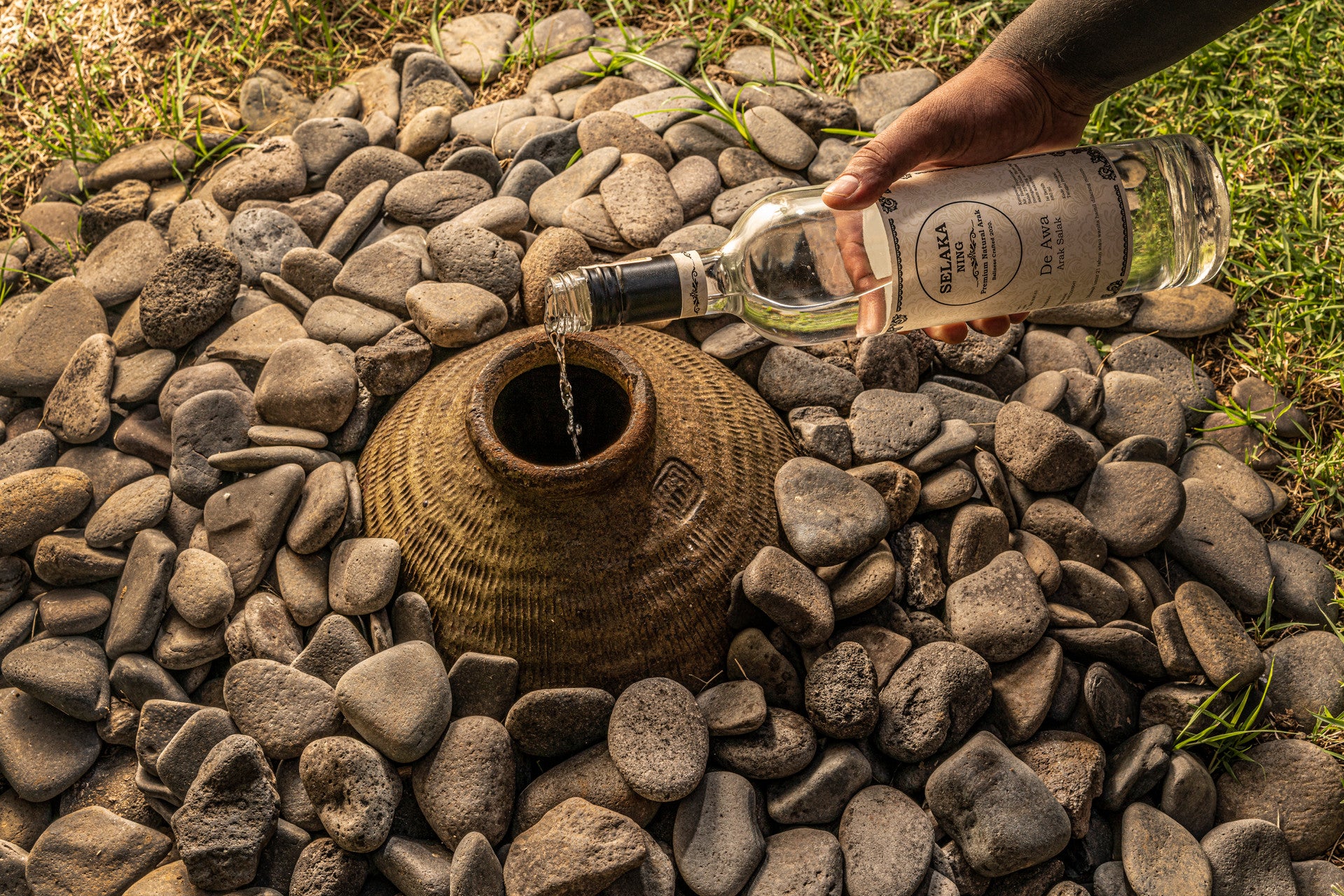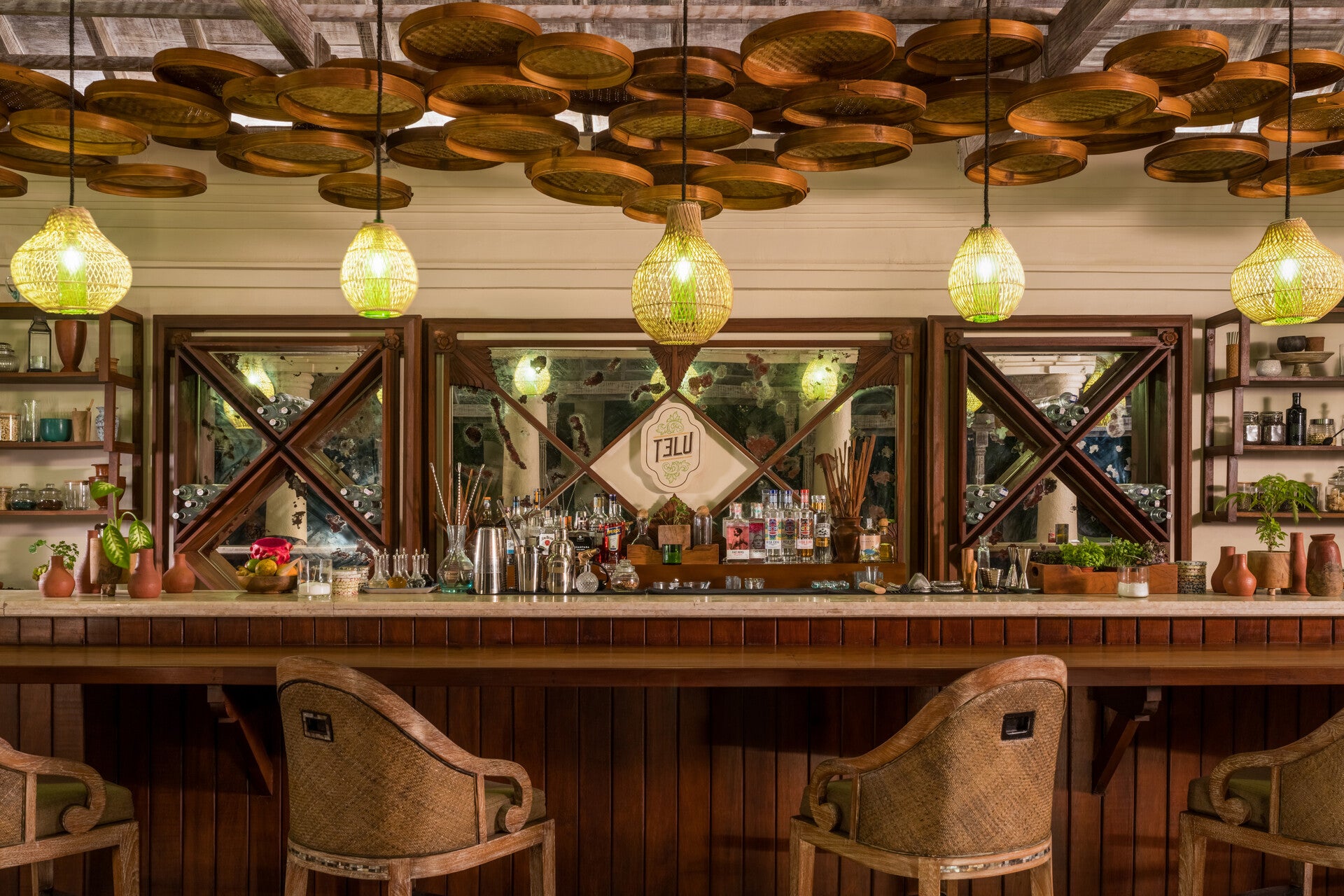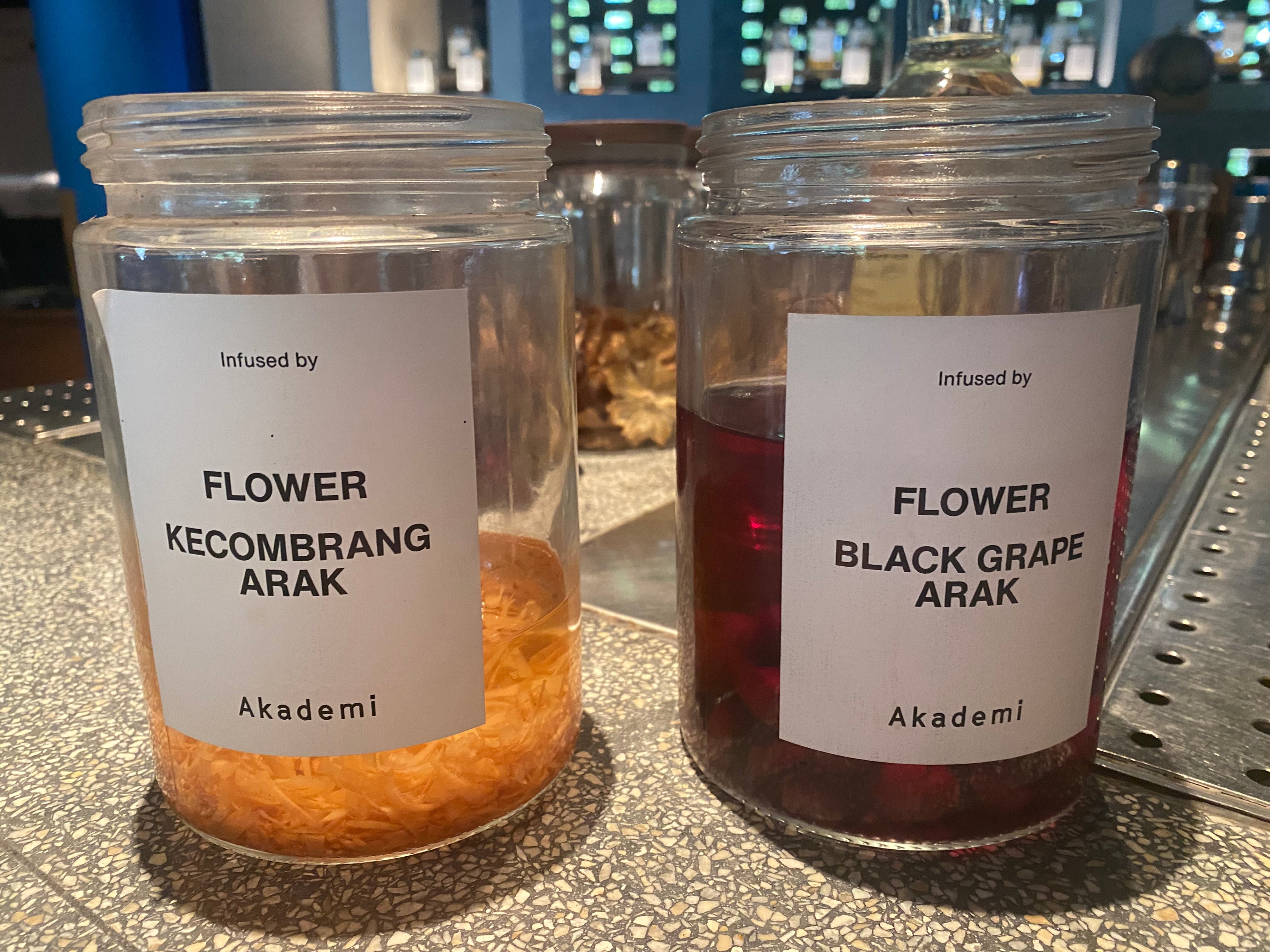The Independent's journalism is supported by our readers. When you purchase through links on our site, we may earn commission.
How Bali’s trendiest bars are championing the revival of an ancient spirit
Introducing arak, the revered Balinese spirit in the midst of a spectacular transformation. Tamara Hinson meets the pioneers taking it from cheap shot to lauded cocktail ingredient as she tastes her way around the famed Indonesian island


When I was a teenager, nearing the joyous day when I could legally order alcohol, my tipple of choice was cheap cider – sickly sweet stuff that I didn’t particularly like and which gave me horrendous hangovers, but which was the cheapest alcoholic drink on offer at my local (unscrupulous) off-licence. If only I’d had the wisdom of Bina, the Balinese bartender and arak expert I meet at beach club-turned boutique resort Potato Head, perched on Bali’s southern coastline.
In Bali, the drink most likely to cause those first, painful hangovers is arak. Like many Balinese, Bina – now an arak expert whose cocktails are legendary – grew up around this ancient spirit, typically made from either coconut palm flower or rice, and produced in vast quantities by community distillers tasked with making enough arak not only for villagers to drink, but to use in various ceremonies and blessings. But its strength – this type of arak typically has an ABV of around 50 and 60 per cent – meant Bina steered clear of imbibing outside of ceremonies.
“When I was younger all my friends drank it, and they’d have awful hangovers,” says Bina, who provides me with an insight into its cultural importance. “Its importance stems partly from the fact that arak is often made from rice, and in Bali, we offer part of our harvest to the rice goddess, Dew Sri. It’s a way of saying thanks. For us, rice is sacred, and so is arak, and there’s this sense that arak is connected to the gods.”

Sadly, this wasn’t a viewpoint shared by the tourists gleefully knocking back cheap shots of home-brewed arak produced by a handful of unscrupulous distillers, none of whom were regulated. Numerous hospitalisations and a handful of deaths tarnished a drink that had never been intended for mass consumption by foreigners. Until, that is, Bali governor I Wayan Koster saw the potential to transform arak into a cultural heritage product – similar to mezcal or sake – and introduced regulations in 2020, which meant arak sold in bars, restaurants and shops could only be produced in regulated distilleries (none of which existed at the time).
Read more on Indonesia travel:
Previously, the lack of consistency meant the only places to obtain arak – beyond community distilleries, many of which are in remote areas of Bali far from tourist hangouts – were decidedly dodgy bars and the odd grocery store. Reputable hotels and bars steered clear. But it’s clear change is afoot from the moment I arrive at Bali’s international airport, where the duty-free offerings now include various types of arak, several in bottles adorned with images of Barong, a fearsome creature from Balinese mythology (Koster, who recently designated 29 January Balinese Arak Day, encourages the new breed of arak producers to adorn bottles with traditional images to reinforce the drink’s cultural connections).
Although the clear liquid is undeniably fiery, there’s also a delicate, floral sweetness I didn’t expect
This new wave of licensed arak producers, whose araks typically have ABVs of between 33 and 45 per cent, are being embraced by mixologists such as head bartender Jan Jurecka, whose workplace is the Willy Wonka-esque arak cellar at the Four Seasons Resort Jimbaran Bay’s Telu bar. Inside, Jan points out a rotary evaporator, used to infuse spirits – including arak – with delicate ingredients at low temperatures, and the shelves are lined with various arak infusions. Varieties on offer include a barrel-aged arak (apparently it’s especially popular with Americans). Jan offers me a shot of neat arak to sip, and although the clear liquid is undeniably fiery, there’s also a delicate, floral sweetness I didn’t expect.
Jan explains that the recent regulations have been welcomed by arak producers, and not just the ones who’ve swapped village distilleries for licensed ones. He tells me that the most popular type of arak, the version made from the sap of coconut palm flowers (arak made from rice is, unlike sake, distilled and isn’t exposed to koji fungus) requires the sap to be drawn from flowers still attached to the tree, and farmers must climb the trees twice a day – at dusk and dawn. “All Balinese distillers will benefit from arak’s upward journey,” says Jan. “Making arak is tough – it requires a lot of manual labour. But as it becomes more popular, these people will know their efforts have been justified – not only in monetary ways but in the sense of cultural pride.”

Mixologists such as Jan are aware that arak’s reputation means many visitors view the spirit with suspicion, and they’re going all out to transform its image. At Telu, for example, arak tasting sessions start with Jan’s Amuse Booze – an arak-based cocktail designed to cleanse the palate. “It’s low in alcohol and has a mild taste, sweet and sour with umami notes,” says Jan. “It helps us ease guests into the world of arak.”
Mixologists generally agree arak works best when used in cocktails made with tropical and citrus fruit juices such as grapefruit and orange. Kadi, bartender extraordinaire at the Ayana Resort and Spa’s Rock Bar, recommends the Tropical Bamboo cocktail. “It contains a basil-infused arak and lime syrup, pineapple juice and lemon juice,” says Kadi. Like many arak fans, he’s a firm believer in its medicinal purposes; his grandfather drank a shot every day. At the Anantara Uluwatu, famous for its twice-nightly arak hours (happy hours are so passé, after all), where the most popular arak-based cocktail is the negroni-like kulawarge, Balinese bartender Mr Widi is equally passionate about its medicinal benefits. “Balinese people will have a shot or two on cold nights – it helps us sleep!” he says.
As it becomes more popular, these people will know their efforts have been justified – not only in monetary ways but in the sense of cultural pride
I can’t help but think that while arak’s origins as a homebrewed spirit contributed to its controversial reputation (although perhaps it’s never a good idea for tourists to knock back spirits poured from label-less jars in back street bars), it’s these origins, and the passion distillers have for a spirit tied closely to their national identity, which make it special. “Craftmanship is key to helping arak go global,” says Yogi Pradita, head bartender at Capella Ubud. Like many Balinese arak fans, he’s proud of this homegrown spirit, and has high hopes for the future. To back up his point, he cites the wise words of Alisjahbana Haliman, founder of Karusotju, one of Bali’s first regulated arak distilleries and an entrepreneur known for his determination to ensure it’s not just bar owners who benefit from arak’s new-found popularity, but farmers, too. “Alisjahbana talks about how he dreams of the day he’ll sip arak in a Manhattan bar,” says Yogi. And I can’t help but suspect that day might not be to too far away.

Travel essentials
Getting there
Malaysia Airlines flies from London Heathrow to Bali.
Staying there
The Potato Head Bali is a trendy place to lay your head, complete with an infinity pool, beach club with DJs and live music and daily workout classes.
Read our best winter sun hotel reviews
Join our commenting forum
Join thought-provoking conversations, follow other Independent readers and see their replies
Comments
Bookmark popover
Removed from bookmarks